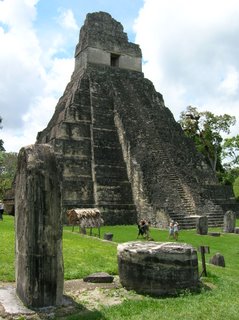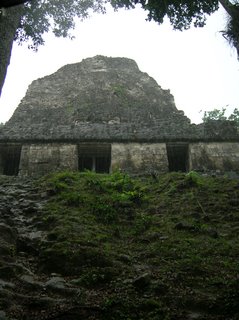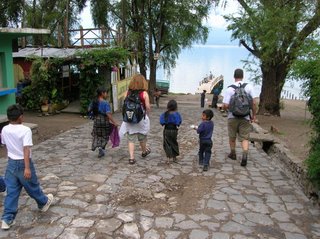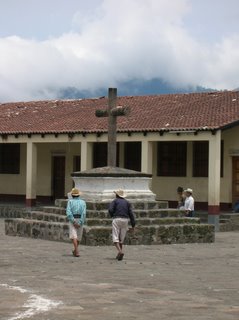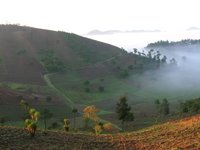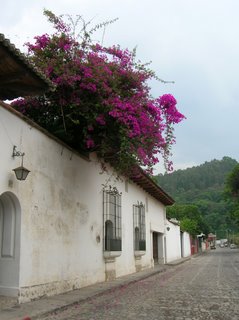
One last set of photos from Guatemala… these are from Antigua, the old Spanish colonial capital of Guatemala about an hour outside of Guatemala City. Antigua has all the charm you expect from such a city. Narrow, cobblestone streets.
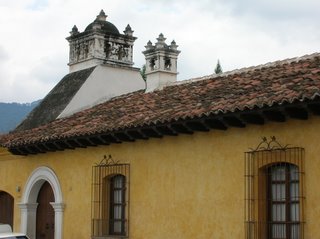
Single story stucco buildings painted in bright colors with red tile roofs. A central square with a cathedral at one end, a large fountain in the middle, and arched walkways on the three remaining sides.
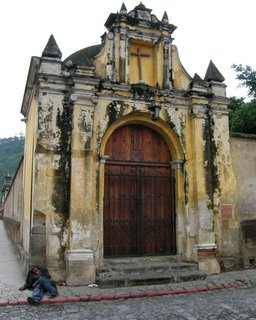 Trees, benches, and people everywhere… locals in traditional Mayan clothing, shopkeepers in western wear, tourists loaded with cameras, and the scores of language students that flock to Antigua each year.
Trees, benches, and people everywhere… locals in traditional Mayan clothing, shopkeepers in western wear, tourists loaded with cameras, and the scores of language students that flock to Antigua each year. In addition, a few hundred years ago an earthquake nearly destroyed the city. Rather than rebuilding or tearing down the remnants, they left the ruins of churches, convents, and monasteries throughout the city.

La Merced was located at one end of the city, down a cobblestone street spanned by a yellow archway. We got caught on this street in a torrential downpour our last night in Antigua. A crack of lightning nearly overhead sent us running for cover into Pollo Campero, Jim’s favorite fast food joint in Guatemala.
Our first ruin was San Francisco. The large cathedral was still standing and used for worship. Out back, though, were the ruins of a monastery. Little was left standing.
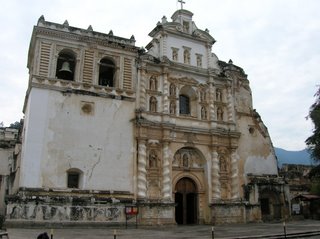
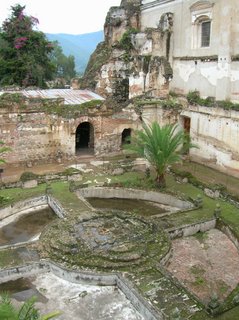
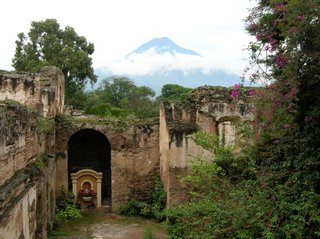 The remnants of a pool, some partial walls and doorways. A group of young boys had all paid the 5 quetzals entrance fee in order to play hide and seek among the stones.
The remnants of a pool, some partial walls and doorways. A group of young boys had all paid the 5 quetzals entrance fee in order to play hide and seek among the stones. 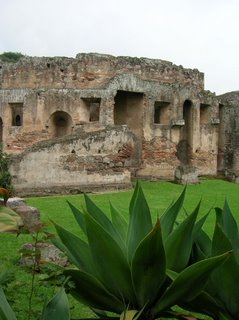
Later we visited Las Capuchinas, a convent at the other end of the city. A central courtyard was surrounded by a series of small cells that served as home for the nuns. No contact with the outside world. Just a five by five cell.
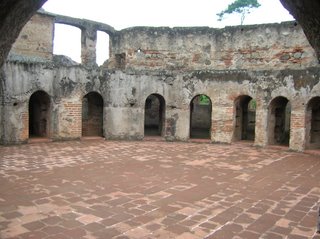
Our final visit was the Cathedral of San Jose, located on the main square. The whole cathedral complex spanned an entire city block. Dome after dome leading up to the main spire. All that is left are the soaring archways with their beautiful carvings of angels and saints.
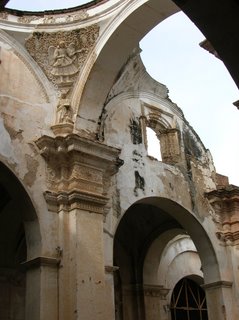
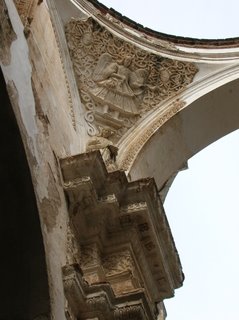
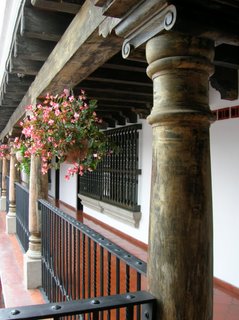
We stayed in a wonderful, colonial style hotel called Posada Lazos Fuertas, owned by a non-profit organization that supports the children who live in the dumps of Guatemala City.
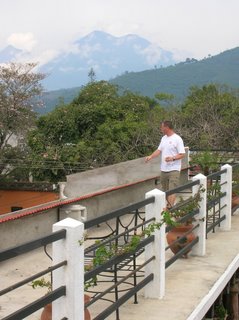 There was a rooftop terrace with magnificent views of the city and the volcanoes.
There was a rooftop terrace with magnificent views of the city and the volcanoes.We spent one afternoon sitting in the town square. Jim chatted with a New Zealand tourist who was traveling from Tierra del Fuego across South and Central America to the United States. Cathy and I were befriended by three little kids… one young girl and her 3 year old brother were selling trinkets to tourists. The other girl just came and stood next to me until I started talking to her. She didn’t want anything. Just someone to talk to. She was fascinated by our cameras. Asked us to take pictures of everything. I wish I could have brought her home.
I’m not sure what it means that Cathy and I knew little about the buildings we took pictures of. I had done some reading before hand to get a sense of the history of the city, but once we arrived, we were more captivated by the architectural beauty, the lines and angles, the possible photographs. We saw most of them through the lenses of our respective cameras. Someone asked me if it was possible to be present in the moment while taking pictures. What does it mean to be absorbed by the outward form detached from the context… the history and the people? On the one hand, I think aesthetic beauty is a tremendous gift from God, a work of grace, an added blessing to a world already richly blessed with life and love. A beautiful flower, an amazing sunset, a stunning cathedral. I often think these are all unnecessary in our world, yet God chose to give such beauty as a gift because of God’s great love for us. On the other hand, I have to remind myself that aesthetic beauty can often hide great evil and ugliness. These churches and convents, while places of worship, were also signs of conquest, signs of Spanish culture being forced upon the people of Guatemala. While outwardly beautiful, they probably evoke other emotions from those who lost their lives and culture at the hands of their colonizers. Can I admire and glorify the aesthetic beauty of these buildings without glorifying the colonial past of the country? I suppose this blog is an attempt at just that. May you enjoy the beauty, but may you value the people of Guatemala even more.


